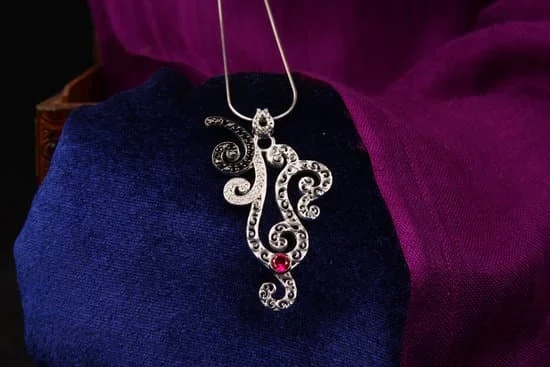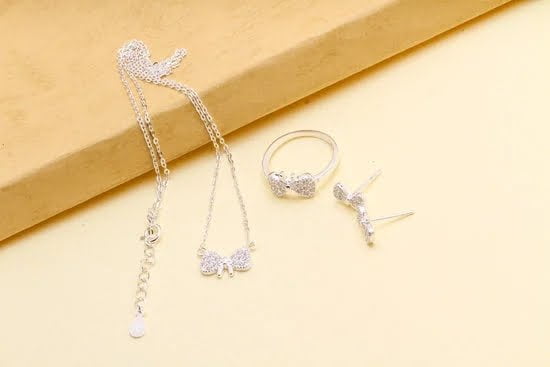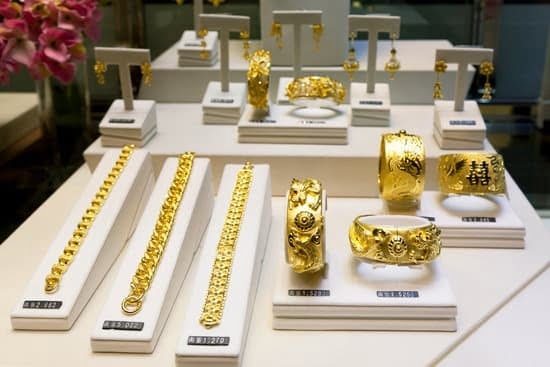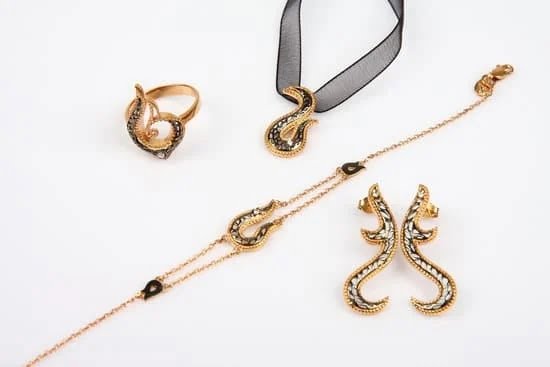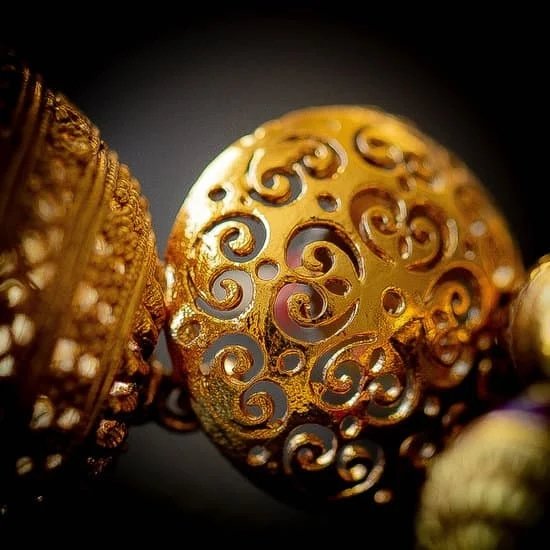Coin jewelry has a rich and fascinating history that spans across civilizations and time periods. From ancient Egypt to the modern era, the use of coins as decorative elements in jewelry has evolved and adapted, carrying with it cultural significance and artistic innovation. In this article, we will explore the history of coin jewelry, tracing its origins, symbolism, craftsmanship, and enduring appeal throughout different periods in history.
The utilization of coins in jewelry can be traced back to ancient civilizations such as Egypt and Rome. Coins were not only used as currency but also served as symbols of power, wealth, and identity. As we delve into the ancient origins of coin jewelry, we will uncover the cultural and societal significance attached to these adornments, shedding light on the value placed on craftsmanship and design.
During the Middle Ages, coin jewelry took on deeper symbolic meanings, often bearing religious or political motifs. The Renaissance then saw a shift towards artistic innovation and cultural influence in coin jewelry, with craftsmen incorporating intricate designs and techniques that reflected the flourishing creativity of the period. As we journey through time, we will explore how coin jewelry has been reinvented and revived in the modern era while still preserving its historical legacy.
The Ancient Origins of Coin Jewelry
Coin jewelry has a rich and fascinating history, with its origins dating back to ancient times. The use of coins as adornment can be traced back to ancient civilizations such as Egypt and Rome, where they were used not only as decorative items but also as symbols of power, wealth, and status.
Egyptian Coin Jewelry
In ancient Egypt, coin jewelry was more than just a fashion statement; it held religious and cultural significance. Coins were often worn as amulets or pendants, with intricate designs featuring symbols of gods and goddesses. They were also believed to offer protection and bring good luck to the wearer.
Roman Coin Jewelry
The Romans also had a long tradition of using coins in their jewelry. Wealthy individuals would often wear coins as part of their attire, showcasing their affluence and social standing. Additionally, coins featuring the likeness of rulers or emperors were used to demonstrate allegiance and loyalty to the prevailing powers.
Throughout the ancient world, coin jewelry served not only as personal adornment but also as a means of conveying cultural identity and societal roles. The craftsmanship involved in creating these pieces reflected the artistry and technical mastery of the time, making them valuable artifacts that provide insights into the customs and traditions of bygone eras.
Coin Jewelry in the Middle Ages
During the Middle Ages, coin jewelry held significant symbolism and meaning for those who wore it. This period of history, roughly spanning from the 5th to the late 15th century, saw a resurgence in the use of coins as decorative elements in jewelry. The symbolic significance of coin jewelry during this time was often closely tied to religious or cultural beliefs.
Religious Symbolism
One of the most prominent uses of coin jewelry during the Middle Ages was as a form of religious expression. Many individuals, particularly those within the Christian faith, would incorporate coins into their jewelry as a way to display their piety and devotion. These pieces often featured coins that were stamped with religious imagery or inscriptions that held spiritual significance.
Wealth and Status
In addition to religious symbolism, coin jewelry during the Middle Ages also served as a symbol of wealth and social status. Those who could afford to adorn themselves with coin jewelry were often seen as affluent and influential members of society. The types of coins used in these pieces often reflected the wearer’s financial standing, with precious metals and rare coins being favored by the upper class.
Cultural Significance
Furthermore, coin jewelry during the Middle Ages also held cultural significance for many people. In some cases, certain coins were believed to possess protective qualities or bring good fortune to the wearer. As a result, individuals would wear these coins as an amulet or talisman, imbuing them with cultural meaning beyond their monetary value.
The era of the Middle Ages represented a time when coin jewelry played a pivotal role in reflecting an individual’s beliefs, wealth, and cultural identity. As such, these pieces continue to hold immense historical value and provide insight into the societal norms and values of this fascinating period in history.
The Renaissance and Coin Jewelry
During the Renaissance, coin jewelry experienced a resurgence as artists and craftsmen sought to innovate and create pieces that reflected the cultural and artistic movements of the time. This period saw a renewed interest in the classical world, leading to a revival of ancient designs and techniques, including the use of coins in jewelry.
The Renaissance also marked a time of great exploration and discovery, with trade routes opening up between Europe and other parts of the world, bringing new influences and materials to the continent.
Notable Aspects of Coin Jewelry During the Renaissance
- Artistic Innovation: During this era, coin jewelry became not only a symbol of wealth but also a way for individuals to showcase their appreciation for art and culture. Artists such as Leonardo da Vinci and Michelangelo were known to incorporate coins into their creations, adding a sense of history and sophistication.
- Cultural Influence: The use of coins in jewelry during the Renaissance was heavily influenced by classical motifs and symbols. Designs often featured mythological figures, gods and goddesses, as well as historical events depicted on ancient coins.
- Use of Precious Materials: Coin jewelry during the Renaissance often utilized precious metals such as gold and silver, reflecting the newfound prosperity of this era. These materials were intricately worked into designs that showcased both technical skill and artistic creativity.
As with many aspects of Renaissance art, coin jewelry became a reflection of society’s values at the time. It was not simply about adorning oneself with wealth but also about honoring history, embracing beauty, and celebrating cultural achievements. The use of coins in jewelry during this period served as a link between past civilizations and the burgeoning humanism movement, which placed emphasis on individualism and intellectual pursuits.
The legacy of coin jewelry from the Renaissance continues to inspire contemporary artisans who draw upon its rich history for inspiration. From museum collections to private collectors, these exquisite pieces are cherished for their connection to an era marked by unparalleled cultural achievements. Today, designers continue to reimagine coin jewelry using modern techniques while paying homage to its heritage from centuries past.
Coin Jewelry in the Modern Era
In the modern era, coin jewelry has experienced a revival and reinvention, as people continue to be captivated by the history and artistry of ancient coins. This resurgence can be attributed to a growing interest in vintage and antique fashion, as well as a desire for unique, statement pieces that tell a story. Let’s explore how coin jewelry has evolved in the modern era and what makes it so appealing to today’s fashion enthusiasts.
- Embracing Tradition with a Modern Twist: Many contemporary jewelry designers are incorporating ancient coins into their collections, offering a fresh take on classic styles. By incorporating modern design elements and techniques, these designers are able to bring new life to ancient artifacts, making them relevant for today’s fashion trends.
- Personalized and Customized Creations: With the rise of custom jewelry options, individuals have the opportunity to create their own coin jewelry pieces that hold personal significance. Whether it’s incorporating family heirloom coins or selecting specific historical coins that resonate with them, this personalized approach adds an extra layer of meaning to the jewelry.
- Ethical and Sustainable Practices: As awareness of ethical consumerism grows, there is a trend towards using recycled or ethically-sourced materials in jewelry making. Some modern coin jewelry designers are committed to using sustainable practices when creating their pieces, ensuring that they honor the legacy of ancient coins while also promoting environmental conservation.
With its blend of history, artistry, and personal meaning, it’s no wonder that coin jewelry continues to capture the imagination of people around the world. Whether it’s an antique Roman coin pendant or a contemporary design featuring vintage coins, this timeless style remains a beloved favorite for those who appreciate both the past and present in their accessories.
Famous Examples of Coin Jewelry Throughout History
Coin jewelry has a rich and fascinating history dating back to ancient civilizations. From royals to rebels, coin jewelry has been worn by individuals from all walks of life for various reasons. One famous example of coin jewelry is the cufflinks worn by King Tutankhamun in ancient Egypt, showcasing the use of coins as decorative and symbolic adornments by rulers.
During the Middle Ages, coin jewelry often held religious or superstitious significance, with coins featuring images of saints or other religious figures being incorporated into jewelry as a form of protection. In some cases, these pieces were also used as a display of wealth and power by royalty and nobility.
In the Renaissance period, coin jewelry became an artistic expression as well as a symbol of cultural influence. The use of ancient Greek and Roman coins in jewelry became popular among the elite, showcasing a fascination with classical art and culture. Additionally, during this time, artists began experimenting with new techniques and designs for incorporating coins into jewelry, leading to innovative and intricate pieces that are still admired today.
These examples demonstrate how coin jewelry has been used throughout history not only as a form of personal adornment but also as a reflection of societal values, beliefs, and artistic expression.
| Coins in Coin Jewelry | Description |
|---|---|
| King Tutankhamun’s Cufflinks | Cufflinks adorned with ancient Egyptian coins showcased the use of coin jewelry by royalty in ancient Egypt. |
| Medieval Religious Coin Jewelry | Coin jewelry during the Middle Ages often featured religious figures on coins used for protection and symbolism. |
| Renaissance Artistic Coin Jewelry | Coin jewelry in the Renaissance period was an expression of cultural influence and artistic innovation. |
The Craftsmanship of Coin Jewelry
Coin jewelry has a long and storied history, dating back to ancient civilizations such as Egypt and Rome. The craftsmanship of coin jewelry encompasses a wide range of techniques and materials that have evolved over time, creating unique and stunning pieces that continue to captivate people today.
One of the most common techniques used in the creation of coin jewelry is called bezel setting. This involves securing a coin within a metal frame, often with a decorative border, to create a pendant or other type of ornament. The skillful placement and manipulation of the bezel are crucial in ensuring that the coin remains secure while also allowing its design to shine through.
In addition to bezel setting, other techniques such as engraving, stamping, and soldering are employed to manipulate coins into wearable works of art. These methods require precision and expertise, as working with delicate materials like gold, silver, and bronze can be challenging. Furthermore, incorporating gemstones or other embellishments into coin jewelry adds an extra layer of complexity to the craftsmanship process.
The choice of materials in crafting coin jewelry is also vital in determining its quality and appearance. Gold and silver have been popular choices throughout history due to their durability and lustrous finish. Bronze coins are also frequently used for their historical significance and rustic appeal. The combination of these metals with precious gemstones or intricate designs results in breathtaking pieces that showcase the skilled craftsmanship behind the art form.
The Enduring Appeal of Coin Jewelry
The history of coin jewelry is a fascinating journey that spans across many cultures and time periods. From ancient Egypt to modern times, the appeal of coin jewelry has endured, captivating the hearts and minds of people around the world. But what is it about these pieces that continues to fascinate and inspire? Let’s delve into the enduring appeal of coin jewelry.
One reason for the enduring appeal of coin jewelry is its connection to history. Each coin used in these pieces carries with it a story of its own, whether it’s from a distant empire or a more recent era. This historical significance adds depth and meaning to the jewelry, making it more than just an accessory. People are drawn to the idea of wearing a piece of history, feeling a connection to the past through these timeless treasures.
Additionally, coin jewelry often features intricate designs and craftsmanship that showcase the skills of ancient and modern artisans alike. Whether it’s a Roman denarius or a modern commemorative coin, each piece is carefully crafted to highlight the beauty and artistry of the coin itself. The skill and attention to detail required to create these pieces add another layer of appreciation for those who wear and admire them.
Furthermore, the symbolic significance of coins adds to their enduring appeal in jewelry. Coins have long been associated with wealth, power, and prosperity, making them powerful symbols in various cultures. By incorporating coins into jewelry, wearers can carry these symbols with them as talismans or reminders of their aspirations.
| Enduring Appeal | Fascination & Inspiration |
|---|---|
| Connection to history | Historical significance adds depth and meaning |
| Intricate designs & craftsmanship | Showcase skills of ancient & modern artisans |
| Symbolic significance | Powerful symbols associated with wealth, power & prosperity |
Preserving the Legacy of Coin Jewelry
Coin jewelry holds a significant place in history, as it not only serves as a form of adornment but also as a reflection of the culture, art, and craftsmanship of its time. As such, it is important to preserve and conserve these pieces for future generations to appreciate. Conservation efforts are crucial in maintaining the integrity and beauty of coin jewelry, ensuring that they continue to be a source of inspiration and fascination.
Conservation of coin jewelry involves careful examination and assessment of each piece, followed by appropriate cleaning and restoration methods. This process requires delicate handling and specialized knowledge to prevent damage to the coins and other materials used in the jewelry. It is essential to work with skilled conservators who understand the historical and artistic value of these pieces and can employ conservation techniques that are both effective and respectful of their original craftsmanship.
In addition to conservation, collecting coin jewelry has become a popular hobby among enthusiasts who recognize its historical significance and aesthetic appeal. Collectors seek out rare or unique pieces from different time periods and cultures, appreciating the artistry and craftsmanship that goes into creating these items.
In doing so, they contribute to the preservation of coin jewelry by safeguarding these pieces in private collections or museums, where they can be studied, admired, and celebrated for their enduring beauty. The passion for collecting coin jewelry also helps to ensure that this art form remains appreciated and valued for generations to come.
Conclusion
In conclusion, the art of making jewelry from coins has a long and rich history that spans across various civilizations and time periods. From its ancient origins in Egypt and Rome to its symbolism and artistic innovation during the Middle Ages and Renaissance, coin jewelry has continued to captivate people throughout history. The craftsmanship involved in creating coin jewelry, using a variety of techniques and materials, has also contributed to its enduring appeal.
Famous examples of coin jewelry worn by royals, rebels, and other historical figures have further solidified its place as a symbol of power, wealth, and individuality. In the modern era, there has been a revival of interest in coin jewelry, with artisans reinventing this ancient art form to create unique and contemporary pieces. The timeless beauty of coin jewelry continues to fascinate and inspire collectors and enthusiasts around the world.
As we preserve the legacy of coin jewelry through conservation efforts and collecting, it is important to recognize its significance in shaping our understanding of history and culture. Coin jewelry serves as a tangible link to the past, allowing us to appreciate the artistry and craftsmanship of previous generations.
Its place in history is not just as an adornment but also as a reflection of human creativity, ingenuity, and cultural exchange across different societies. The enduring allure of coin jewelry ensures that it will continue to be cherished for generations to come.
Frequently Asked Questions
What Is the Origin of Coin Jewellery?
Coin jewelry has been around for centuries, dating back to ancient times when coins were worn as decorative accessories. These pieces were often seen as symbols of wealth, power, or cultural significance.
Why Do People Wear Coin Necklaces?
People wear coin necklaces for a variety of reasons. Some individuals are attracted to the historical and cultural significance of the coins, while others appreciate the unique and timeless aesthetic they provide. For some, wearing coin jewelry can be a way to honor their heritage or commemorate special occasions.
How Do You Wear Coin Jewelry?
Coin jewelry can be worn in a variety of ways depending on personal style and preference. Coin necklaces can be paired with casual outfits for a bohemian look or worn with more formal attire for an elegant touch. Layering multiple coin necklaces is also a popular trend, creating a stylish and eye-catching statement piece.

Welcome to my jewelry blog! My name is Sarah and I am the owner of this blog.
I love making jewelry and sharing my creations with others.
So whether you’re someone who loves wearing jewelry yourself or simply enjoys learning about it, be sure to check out my blog for insightful posts on everything related to this exciting topic!

